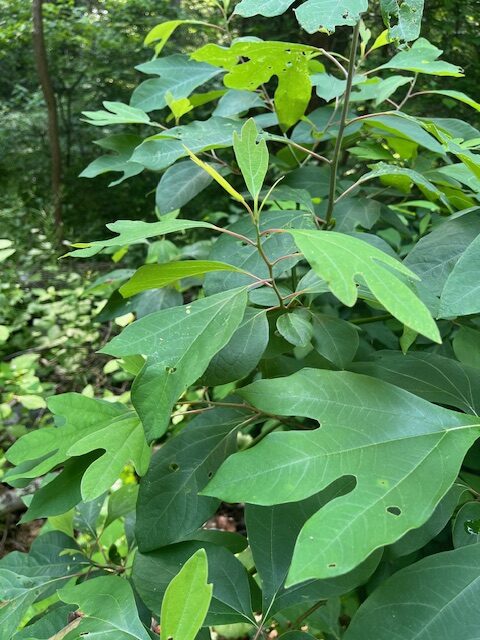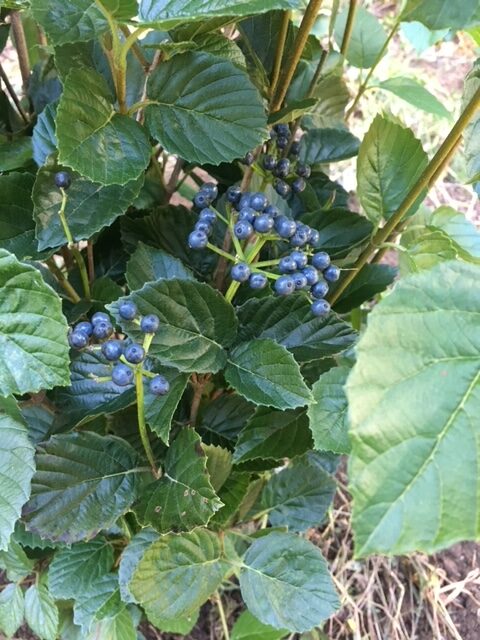
Robins in holly
A robin nests in a holly bush. A bumblebee savors meadowsweet pollen. A wild turkey gobbled down the dark blue berries on the maple leaf viburnum. A swallowtail butterfly lays her eggs on a spicebush leaf. A red fox bounds away into the thick underbrush. It is all happening in the understory…
Our town is full of mature canopy trees that reach towards the stars. They dominate the landscape so much that we often forget about the significance of the understory, the shrubs, and the smaller trees that grow in the shadows of giants. The understory is a key habitat that serves as a safe haven, a nursery, a grocery, and home to nearly all the wild creatures around us.
Most canopy trees in the eastern forest are wind-pollinated, while many understory plants depend on insects to pollinate their flowers. These plants offer nectar and pollen and host insect larvae. After pollination, the resulting fruits, berries, and seeds feed birds and wildlife.

Bumblebee in summersweet

Maple Leaf Viburnum berries
Songbirds that feed near or on the ground, such as cardinals, grosbeaks, robins, and goldfinches, build cup-shaped nests in low bushes within ten feet of the ground. The hermit thrush often nests directly on the ground, as do oven birds and game birds, such as wild turkeys.
Understory vegetation helps camouflage the nests and protects the safety of the eggs, hatchlings, and brooding adults. The thick brush also harbors many mammals, such as foxes, coyotes, bobcats, and the small animals they prey on.
Unfortunately, much of our native understory has been over-browsed by whitetail deer. The void has been usurped by invasive, non-native Japanese barberry, winged euonymus, and multiflora rose, among others. While these plants provide cover and food for birds and wildlife, they do not sustain our insect populations, which have co-evolved with native species and depend on them as host plants for their developing larva.


Sassafras (left) and Spicebush both host Spicebush caterpillars
Reviving the understory presents a challenge in deer country. The NCLT is slowly reintroducing native shrubs to our Still Pond Preserve and other properties. We also celebrate all the native species growing naturally and holding their own against the deer throughout our preserves. Here are a few:

Nannyberry

Carolina Allspice

Doghobble

American Holly

Summersweet
Recent Comments